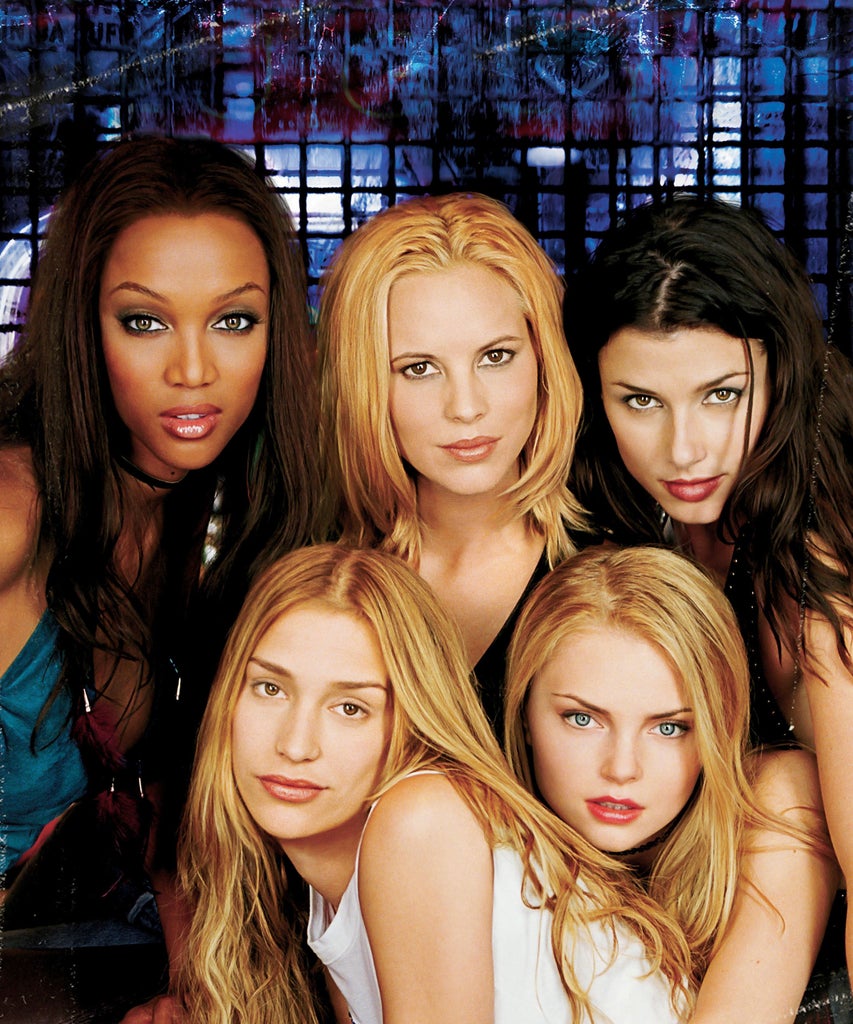
Low-rise leather pants. Leopard print mini skirts. Ripped USA T-shirts. As a teenager watching Coyote Ugly in the early 00s, I was immediately hypnotized. In fact, few films from then made as big of a fashion impression on me. Part coming-of-age story, part dance film, the comedy-drama (that came out 20 years ago!) made me want to own, among many other items, a pair of tight leather pants and a red silk skirt — two items that would, funnily enough, go on to become staples in my closet to this day, albeit both in much higher-rise versions.
The movie follows Violet (played by Piper Perabo), a young woman with a case of stage fright, who leaves her dad and waitressing job at a pizza parlor in New Jersey to pursue her dream of being a songwriter in New York City. “In the beginning, her look is very Americana — a little bit of Bruce Springsteen, New Jersey Americana kind of look. We went for the classic looks like denim skirts, off-the-shoulder tops when she is a waitress, a little bit more innocent, youthful,” Marlene Stewart, Coyote Ugly’s costume designer, told me recently of the inspiration for Perabo’s character. Indeed Violet starts with floral dresses and skirts and pastel-colored cardigans, soon swapping them for more practical button-downs and jeans as she takes her demo tape from one Manhattan record label to another in hopes of getting her songs heard.
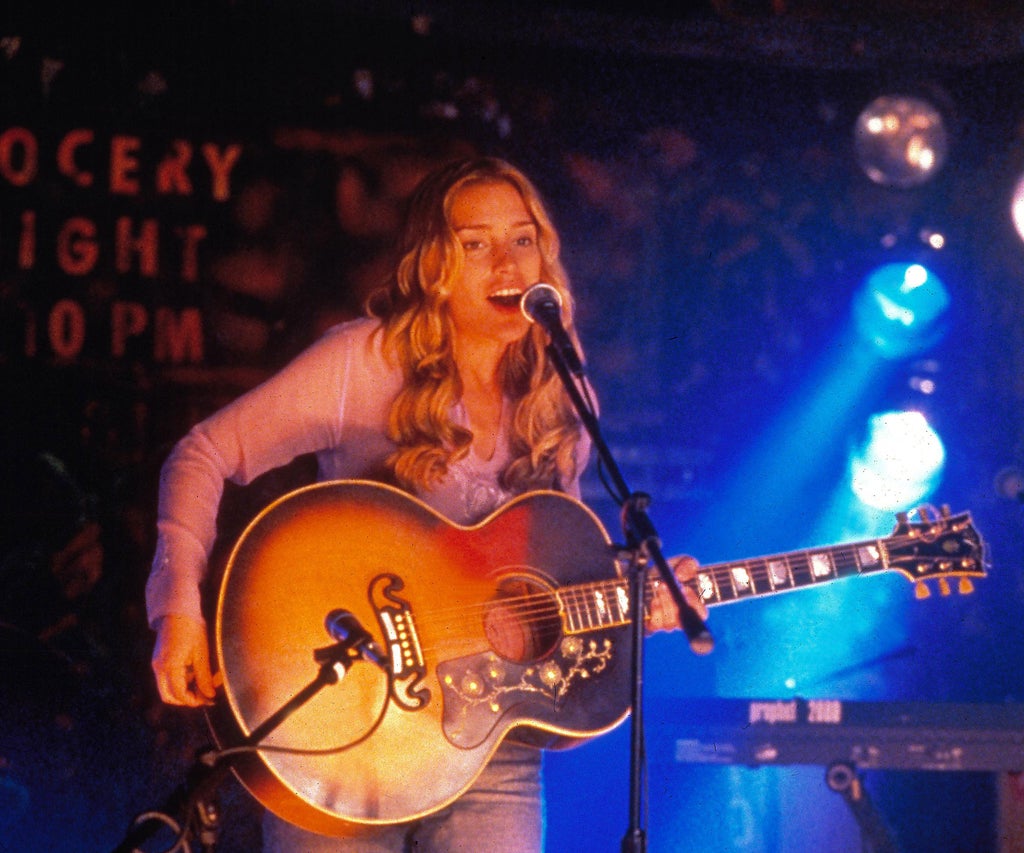
After Violet is hired to work at Coyote Ugly, a rowdy bar that sees its bartenders dancing on the tables, lip-syncing to Blondies hits, pouring water on themselves, and setting fire to the bar, she (with the help of another bartender Cammie, played by Izabella Miko) starts to experiment and get bolder with her fashion as she also learns to (literally) use her voice on stage. “The costumes were a reflection of Violet’s journey from innocence to really developing into an artist,” says Stewart.
Stewart, who worked with Madonna on music videos that include “Vogue,” says she treated Coyote Ugly as a “dance film” when it came to costumes: While she wanted the looks to be performance-worthy given the many dance sequences, they also needed to withstand the movement. “One of the things that’s really important when you do clothes or choose styles is to make sure you can move and dance in them, and this was particularly important in this movie,” Stewart says. “It’s important for the clothes to be practical, in being able to move and dance like in a live performance show.”
From working on The Doors, the Val Kilmer-starring 1991 film about the Jim Morrison-led rock band of the ‘60s, she knew traditional leather pants wouldn’t be ideal. “There were no stretch leather pants, and people could barely move in the real pants or they split or the leather was thick,” she says. “You didn’t have anything to hold you in, everything could come out.” For those getting flashbacks of G-strings peaking out of navel-grazing pants of the ‘00s, Stewart, who studied a pair of Morrison’s actual pants in preparation for the biographical film, says the early aughts silhouettes had nothing on those from the late ‘60s. “People thought that Coyote Ugly had these super sexy pants, but they really weren’t,” Stewart says. “If you think the low-rise pants were low, it really does come from the late ‘60s and ‘70s. I think the zipper length was maybe four inches long. I mean they were so low.”
Still, to avoid any wardrobe malfunctions for this film while creating memorable looks that were also entirely original, Stewart estimates that she and her team made 70 percent of Coyote Ugly costumes, including the famous trousers. “Most of those leather pants, we made, because they had to fit like gloves, and we had gussets in them and stretch leather and all sorts of different additional pieces for them to dance,” she says. While that may seem like a lot of work, for the designer with years of experience in the garment business, it was in some ways easier. “Sometimes you spend just as much time fitting a purchased garment, and it’s not exactly what you want,” says Stewart. “For me, it’s actually easier to make something than to look for it.”

While the low-rise pants, going out tops, and spaghetti strap tanks now scream quintessential ‘00s, according to Stewart, in addition to pulling elements from ‘60s and ‘70s fashion, she also looked at the ‘80s and other eras. The result? Looks ranging from barely there tops with fringe and oversized belt buckles to snakeskin pants, flared bottoms, and T-shirts with “Oklahoma” and “USA” emblazoned on them. “We used a lot of Western-themed Frye boots, cowboy boots, cowboy belts. A lot of times, I used some classic looks — Americana, little T-shirts; it was all about a ripped T-shirt for some of the characters — and rhinestones,” she says. “The idea was to have fun and play and have the girls each exhibit their own unique characters up on the bar and also be able to function, like, during a wet T-shirt contest, which could have happened at any point because people were throwing drinks and things like that.”
For Violet’s first day on the job, Maria Bello’s Lil tears the sleeves and midriff of Violet’s “USA” shirt off in one of the film’s most iconic fashion moments that also set the scene for Violet’s soon-to-come fashion transformation. “I felt like she’s kind of that all-American girl,” Stewart says of choosing the style, adding that they used a “breakaway,” a process of hand-stitching all parts of an item lightly so that it can easily be torn in an aesthetically-pleasing manner, to achieve the look. “It’s like pulling away the character that came from New Jersey, and pulling her into the New York kind of girl, metaphorically speaking.”
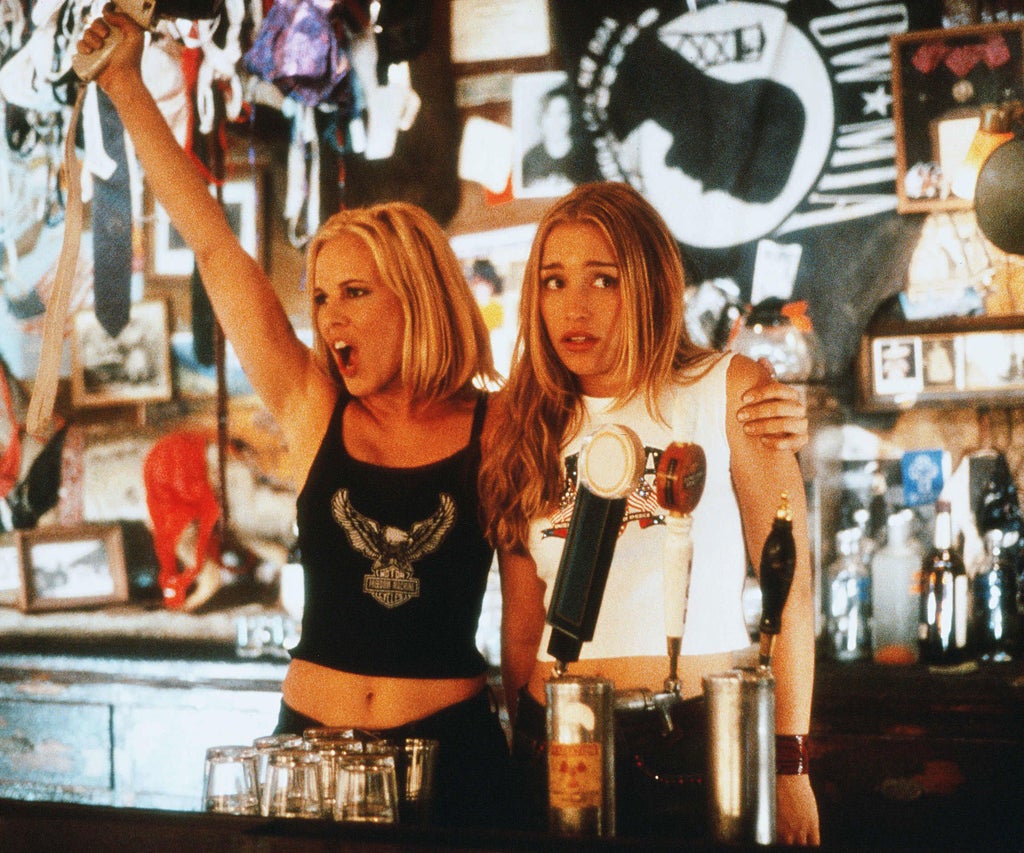
For the other bartenders — who, as Cammie puts it in the film, “all play our little parts” when referring to the personas they portray while working at Coyote Ugly — Stewart says she “tried to take certain keynotes from each person, and find out what their characters were really trying to say.” Stewart outfitted Rachel (Bridget Moynahan), the toughest of the group with a habit of cutting off a customer’s tie or ponytail, in ‘70s-esque leather pants and halter tanks, which she styled with edgy accessories like ear cuffs and thick chokers.
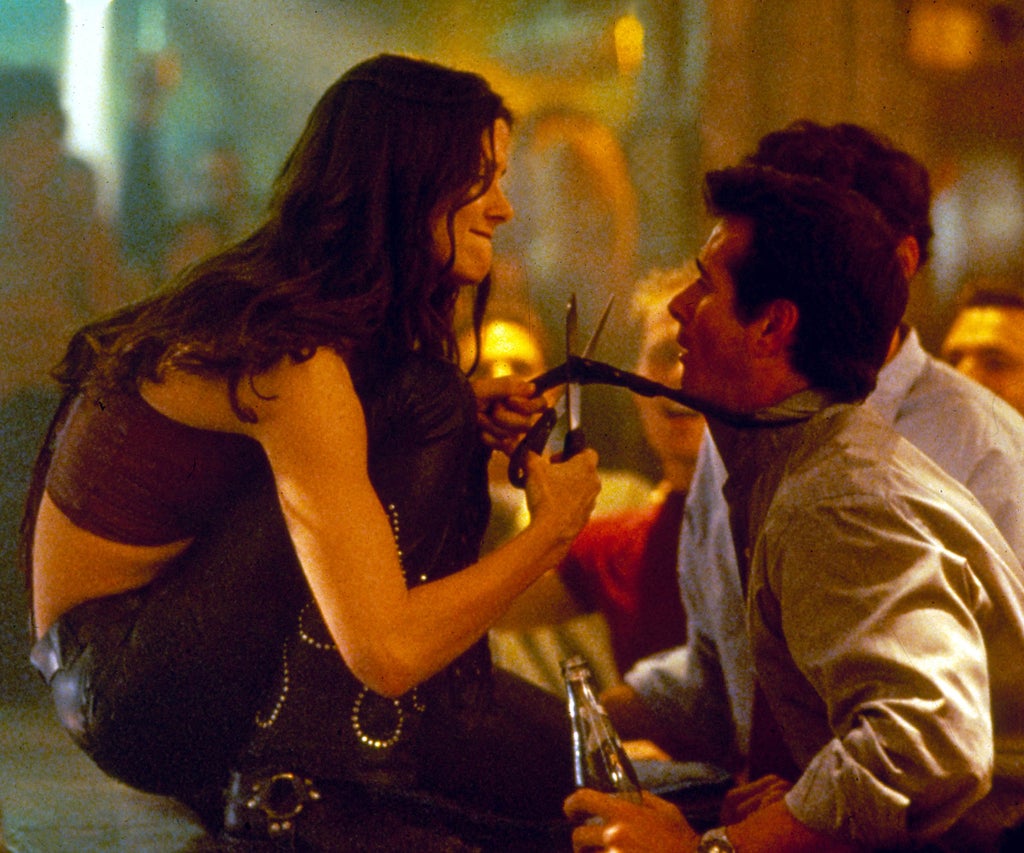
For Zoe (Tyra Banks), the bartender-turned-law student whom Violet replaces, Stewart pulled a color palette of turquoise and deep brown. Cammie’s look is in direct contrast to the two: She wears cutesy sheer shirts with feathers, pink leopard pants, mini skirts, and bedazzled jeans. “Her character is very flirty, someone who wears kitten heels with marabou on them,” Stewart says.
Meanwhile, Lil, the owner of the bar, wears vests as shirts and utilitarian boots. For her look, Stewart says she pulled some “biker chick” elements of Hogs and Heifers, the Meatpacking District bar that Coyote Ugly is based on. “Her character is much more androgynous,” she says. “She is the woman that’s in charge of the bar, she rules the roost.”
As for Violet, leopard prints and the color red, sometimes even worn together, become prominent features of her Coyote Ugly wardrobe — two “classics” which, according to Stewart, Violet would have been drawn to, given her penchant for timeless styles, but that could still land a punch on stage. “They kind of reflected her strength and really made a statement,” she says. “Red is a very powerful, strong color for any character, and it catches your attention. And leopard is always about having fun — you can’t take it seriously, it’s very tongue-in-cheek. But also, she wears skirts, so it’s still all feminine and soft.” Even when she does indulge in the low-rise pants trend like the rest of the girls, she opts for more classic styles in muted colors like black and leather in the form of a trench coat.
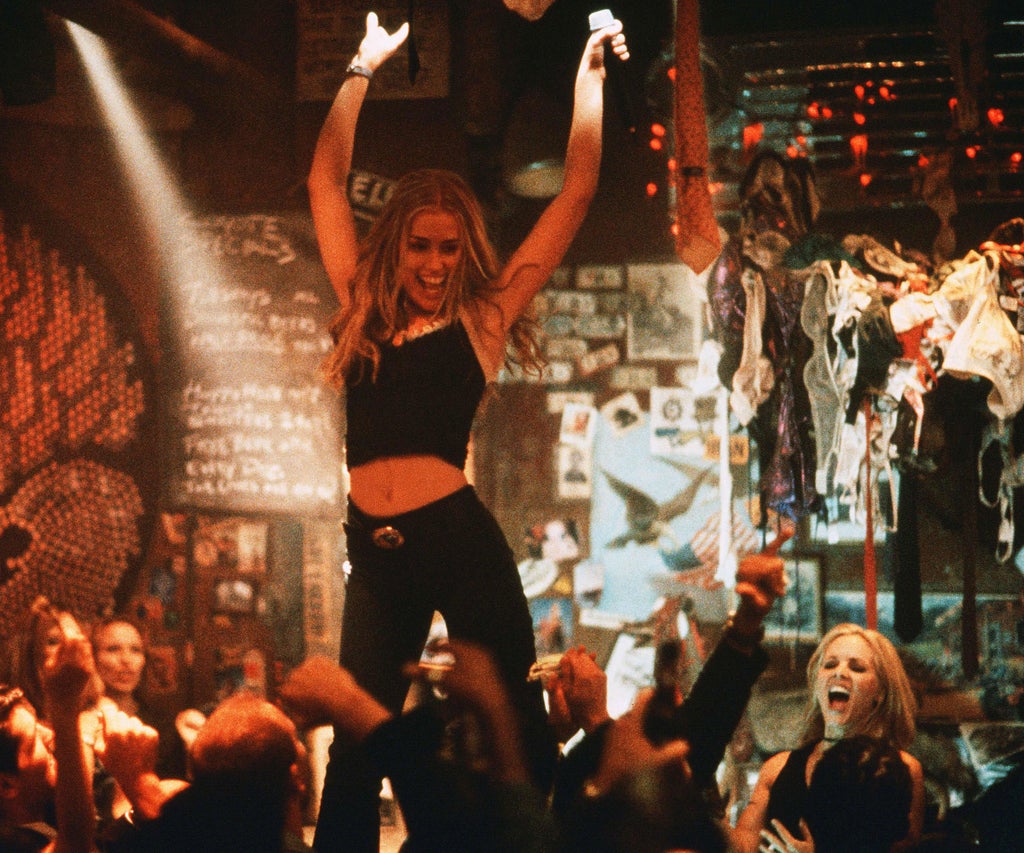
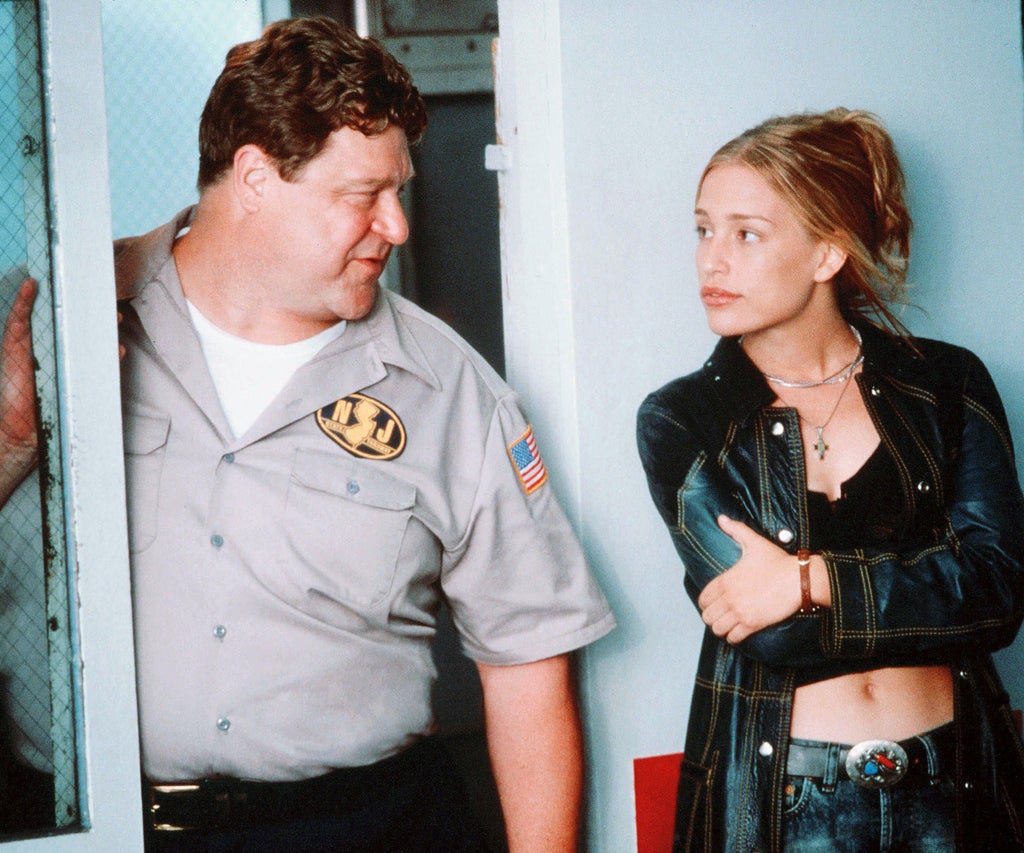
In her final performance, during which she notably sings alongside LeAnn Rimes, Violet wears a look that’s a culmination of her personal style and stage persona: a dainty gold top and snakeskin pants — neither of which would look out of place on today’s runways.
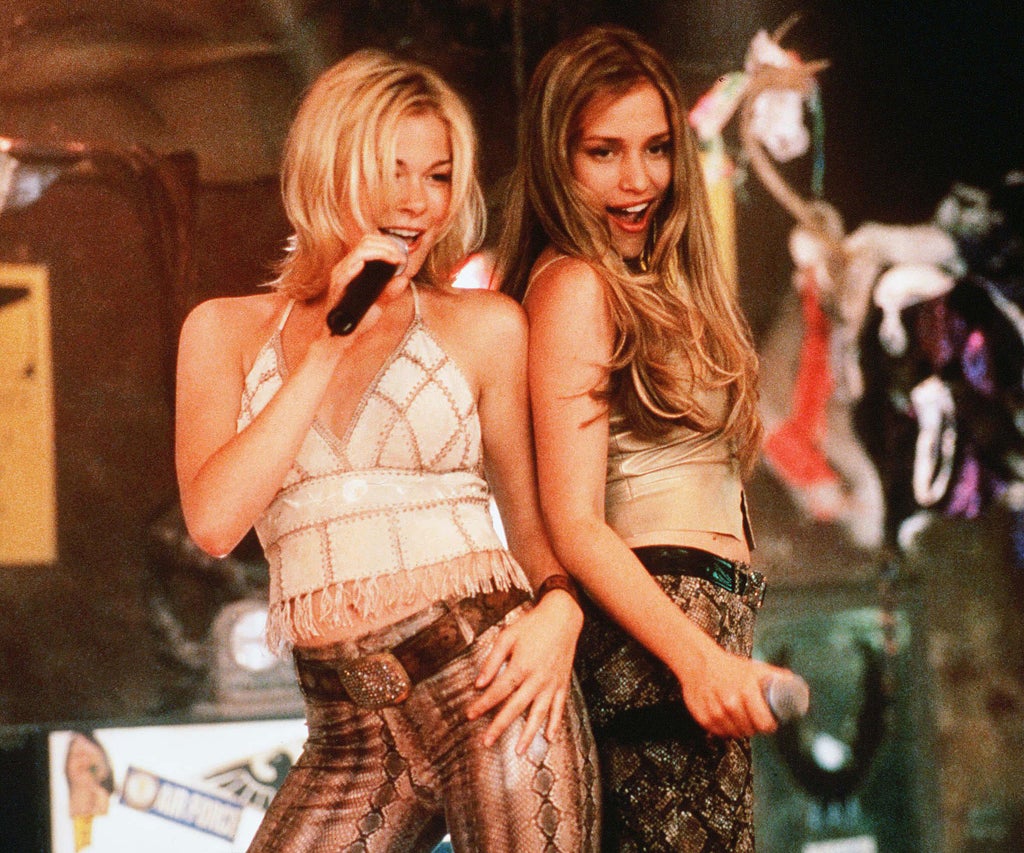
“In many ways, as we know, fashion kind of recycles,” Stewart says. “Everybody takes something, whether it’s from last year or 10 years ago or 20 years ago… and builds on it and transforms it and uses it to kind of move to the next place.”
That said, 20 years later, with fashion this good, it’s no surprise that the styles of Coyote Ugly remain just as covetable.
Like what you see? How about some more R29 goodness, right here?
‘Baby-Sitters Club’ Features ‘90s Trends For Gen Z

No comments:
Post a Comment